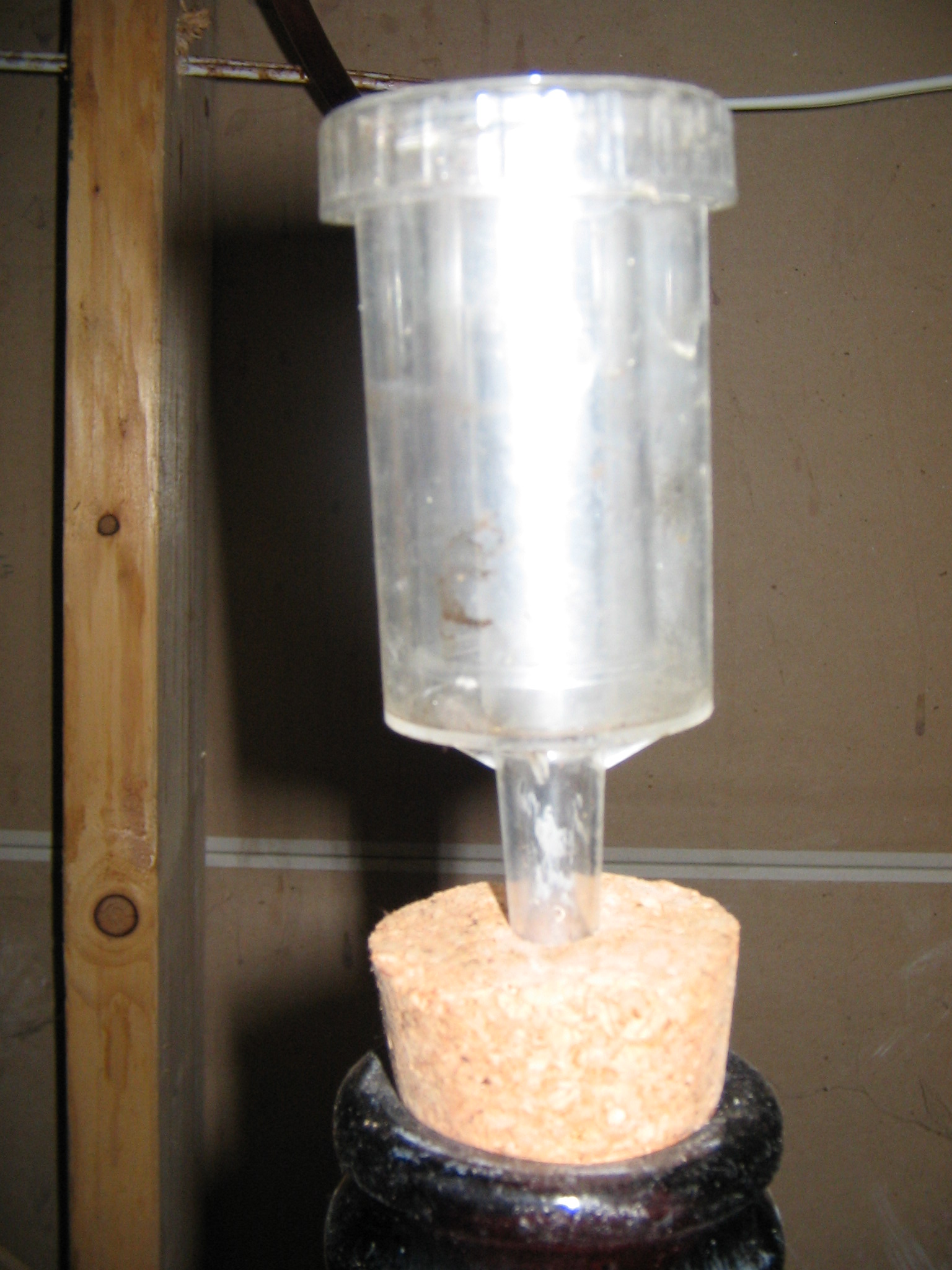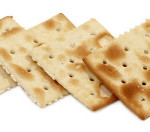Grape Season Means Making Wine At Home
It is Grape Season!!! One of my very favorite times of year. Why? Because we make wine at home!
My parents have made wine at home for many many years…As long as I can remember, actually.
Every grape season, we choose what kind of grapes we want to use, and order them early from a local grower. We usually make our wine with concord, Agawam, and Niagara grape varieties. We pick up about 4 bushels of grapes, and use the grapes we grow in our garden…And it is a family affair.
We all get together to wash and “process” the grapes. Meaning we pick each and every grape off of the stems.
Then, the boys take it away – well, into the garage – to juice the grapes through a grape/wine press into a huge Rubbermaid-type pail/trash bin with a spout at the bottom.
The boys then drain the juice from the bin into boiling water sterilized demijohns.
A simple syrup made from 1/2 water, 1/2 sugar (~1 bag) boiled until the sugar is dissolved, is added to the juice, since we love sweet wine that tastes something like Port or Sherry.
We use a simple syrup because if you add pure sugar, it may not completely dissolve in the juice, and will sit at the bottom. Your wine will get sweeter and sweeter as you get to the bottom, probably to the point where it is no longer even enjoyable. So, please use a simple syrup.
If you like dry wine, don’t add any extra sugar at all. The juice will have enough natural sugar in it to help it ferment, but it will take longer.
Some people add yeast, but we never do, and find this step unnecessary, as the juice will naturally ferment and doesn’t really need any help. We also feel that it gives the wine a flavor that we do not particularly enjoy!
 The demijohns are capped with a fermentation lock. This is filled with a little bit of water, and you can see the gases from fermentation bubbling.
The demijohns are capped with a fermentation lock. This is filled with a little bit of water, and you can see the gases from fermentation bubbling.
Then, we wait only a few months, since we can never wait, and love the flavor of that this rough wine has. The extra sugar we added helps the fermentation process happen quicker. This wine tastes like luscious grape juice with a kick…sometimes a wallop, but it always tastes wonderful and fresh and fruity. My mother calls it “New Wine”.
You never want to leave the wine in the demijohns for too long and let it ferment too far, as it will start to taste like vinegar. However, if you want to make red wine vinegar or white wine vinegar, then you are going in the right direction.
As you are waiting, I know you’ll be tasting along the way. If the wine is not sweet enough for you, no problem, add some more simple syrup. If there isn’t enough room in the demijohn, get another one, or siphon off the juice, and enjoy that by itself, to leave room for adding the simple syrup.
From there, we either bottle it, by racking off the wine using a plastic siphoning hose, or we have even been known to leave it in the demijohns, since it gets used up quickly. Do your best not to siphon off the sediment from the bottom of the demijohn, where it has settled and collected.

I have friends from all over the globe, who talk about traveling to visit Canada, just to have the wine they so fondly remember and enjoyed, since we always have some around to serve to guests and to cook with. I prefer this wine over any wine I could buy at the liquor store.
You may use any kind of fruit to make wine. So, experiment and most of all, have fun doing it!
Here is another version on how to make wine, just to get someone else’s point of view as well. There are many different opinions on what is the best way to do it…
Enjoy!
***
How To Make Wine At Home
By Scott Kintraw
Making wine at home is not difficult, and it is a very rewarding hobby. In this article, we will go through the equipment needed and all the steps you take to make wine from fruit – grapes, apples, plums, pears, peaches, or whatever fruit you have.
You can also make wine at home from a kit, usually using grape concentrate, but the results are very variable, and it is much more satisfying to make wine from fresh fruit.
You probably thought of home wine making because you have your own fruit, or have been given some, or because fruit is in season in your area and you can get it very cheaply. Making wine is a great way of using fruit when you cannot possibly eat it all, or make all of it into jam, or freeze it all.
I have made wine successfully from many kinds of fruit, including grapes, apples, apricots, plums (many varieties), quinces, pears and peaches. Make sure you discard all rotten or suspect fruit right at the start.
Assuming you have your fruit ready, here are the equipment and supplies you need.
* A large food grade plastic tub or stainless steel pot to squeeze or press juice into. Needs to have a lid.
* An electric juicer (not essential if you can squeeze or press the fruit by hand).
* A glass fermentation vessel like a jug, carboy or demijohn (also called a ‘jimmyjohn’) with an airlock. These are available at brewing shops. It is usually better to use several smaller vessels (of one gallon capacity) than one large one.
* A plastic tube for siphoning.
* Yeast (available in packets at brewing shops and some supermarkets).
* Sugar.
* Sterilizing solution or tablets. (Not essential – you can clean equipment with boiling water.)
With this all collected, follow these steps to make your wine.
Get your juice
People starting out with home fruit wine making often wonder how much fruit they actually need. Here is a tip I have found works – you need enough juice to fill the glass fermentation vessel you are using – your carboy or demijohn. Some recipes advocate watering your fruit juice to make up the quantity you need, but never do this. Use pure juice and your wine will be full-flavored and satisfying to drink.You will either press the fruit, squeeze it by hand or use an electric juicer.
If squeezing by hand (soft plums for example) you will need a large stainless steel or plastic container. If you have hard fruit like apples or hard plums, and electric juicer is a good investment if you don’t own one already. You can also cut up the fruit and boil it in a little water to extract the juice, but this degrades the flavor of the final wine. If you have grapes, you can try trampling them with your feet in the traditional manner.
Some fruits can be cut up and left to soak for a few days in a little water to extract the flavor and color from the skin. Some fruit, like apples, throw a tremendous froth after juicing and you will have to siphon the juice out after the froth has risen to the top. Note that mixed fruit wines are very successful. If you have only a few apricots but a lot of apples, mix the juice to make up your gallon.
Add the sugar
Some fruit juice, like very sweet grape juice, will not need the addition of any sugar. Most other fruit wines will need sugar to be added. I normally add 2 pound of sugar to make up one gallon of fruit juice. If you prefer a drier wine, you can reduce this amount. This is the reason it is better to use several smaller glass vessels when starting with home fruit wine making – you can vary the amount of sugar in each (record this by writing on the carboy with a felt pen); when you eventually come to drink the wines, you will know which style between dry, medium and sweet that you prefer.
More sugar also means more food for the yeast, and so more alcoholic wine at the end of the process.Add the sugar by warming the fruit juice slightly in a stainless steel pan, and stirring in the sugar to dissolve it.
Add the yeast
Sterilize your carboy or demijohn with sterilizing solution, or boiling water. Put the sugared fruit juice into your vessel. Dissolve the powdered yeast in a little warm water and sugar in a cup, and leave it for a few minutes to activate. Then add the yeast to the fruit juice. Put your air lock on the vessel.
Fermentation of the fruit juice should begin soon, and you will see bubbles in the air lock. This means the yeast is converting the sugar to alcohol.
Watch and wait
Put your fermentation vessel in a warm place if possible. Ideally you should leave the wine fermenting for nine months to a year. If you drink it after only a month or two it will taste rough and poor; leaving it for about a year will let it mellow out – this really makes a difference. As fermentation goes on, you will notice a white layer appear at the bottom of the fermentation vessel. This is formed by dead yeast cells.
You can ‘rack’, or siphon the wine into a new vessel, which stops the wine becoming tainted with a yeasty aftertaste. You should do this once a month.
Bottle your wine
If the wine has not clarified, and you want it to be fully clear before bottling, leave the vessel in a very cold place for a week or so, and the clarity should improve.
When the fermentation has stopped (no bubbles coming through the air lock) you can bottle the wine and cork the bottle. Remember to sterilize the bottles and corks before you use them. If you will be making a lot of wine, remember to label all the bottles with details of the fruit, the yeast variety used and date of bottling. If you make a superb batch, you can then try to replicate it in following years.
Drink up!
Few people can resist drinking a bottle at this stage. But most fruit wines are at their best up to two years after bottling, so you can put a few bottles aside until you have some friends round, or have something to celebrate. There’s nothing quite like drinking your own wine, made the way you like it!
Scott Kintraw makes his own fruit wines in the fall every year. For more detail on how to make wine and more tips for home wine success, see how to make wine at kintraw.com
Article Source: http://EzineArticles.com/?expert=Scott_Kintraw
http://EzineArticles.com/?How-To-Make-Wine-At-Home&id=572553
***
I really enjoyed today’s installment of Cooking With Kimberly, as this is one of my favorite projects. It’s so rewarding to have a product that the entire family helped to make! Awesome stuff!
Eat Deliciously,
Kimberly Edwards 😀
P.S. If you want some more delicious recipes for making wine at home check this great product out:
Wine Making At Home – Expert Wine Maker Interview And User Guide With Bonus Recipes
[tags]make wine at home, home wine making, fruit wine, homemade wine, grape season, grapes, wine, winemaking[/tags]
Similar Posts:
- How to Make Grape, Pear & Wheat Grass Juice + Video
- A Celebration of Vinegars: National Vinegar Day
- What in the World is Icewine?
- National California Wine Month: What Could be More Natural?
- Web Chef Review: Niagara Cuisine Verjus










January 12, 2009
good use and recipe for making wine at home.
would like to see more on some good use of flowers of the season and the perennials too.
May 12, 2009
hi kimberly!
i’m planning to make a dragon fruit wine but i’m worrying that the must will turn out to be pure pulp and will not give enough juice for the wine. someone suggested me to use a juicer or blender but i thought it could make my wine bitter because of the crushed seeds.
do you know how i can properly prepare a must for my dragon fruit wine?
and also do you have a dragon fruit wine recipe? i’m really interested in making one.
i would gladly appreciate any help from you.
thanks! ^_^
July 17, 2009
Hello Margaux,
Hmmm…I even talked this one over with my mother.
Basically, what you’re going to want to do is wash, peel, then chunk the dragon fruit. Crush it with a potato masher and leave some chunks too.
You’ll put it in a large container with a spout at the bottom to get the juice out, as the juice and pulp should separate.
Then, you simply continue with the process laid out in this post above…by extracting the juice from the container and putting it into the sterilized demijohn with the simple syrup, so it can ferment.
I’ve never made dragon fruit wine, but I think that’s an awesome idea, Margaux!
Please let us know how it turns out. I am anxious to hear!
Kimberly 🙂
May 1, 2010
Hi Kim,
You mentioned that you never use yeast! That’s very interesting. I always use yeast! Are there any benefits to not using it? How long does it usually take to ferment?
August 8, 2010
Hello Para10!
No, we never use yeast – the grapes we use have a high sugar content, and we add extra sugar as well. However, we enjoy a sweeter, fuller bodied wine.
If you like drier and less sweet wines, you may want to use yeast and choose your grapes accordingly that have a lower sugar content.
It takes a few months for the wine to be ready, but in the meantime, you have a seriously delicious grape juice to try if you can’t seem to wait…LOL
Hope this helps you out!
Kimberly 🙂